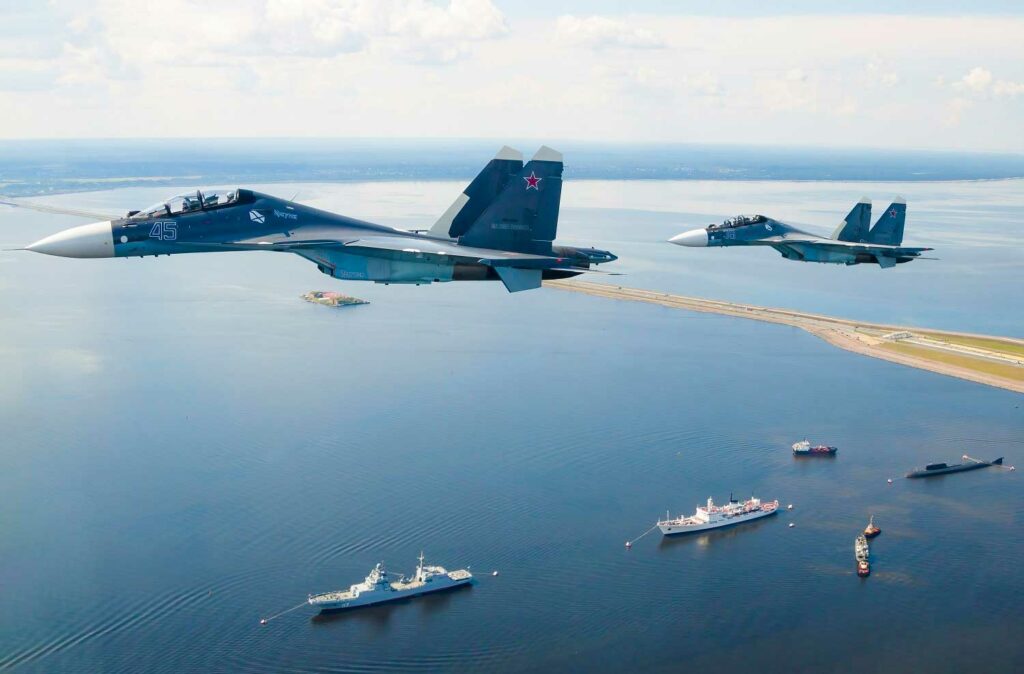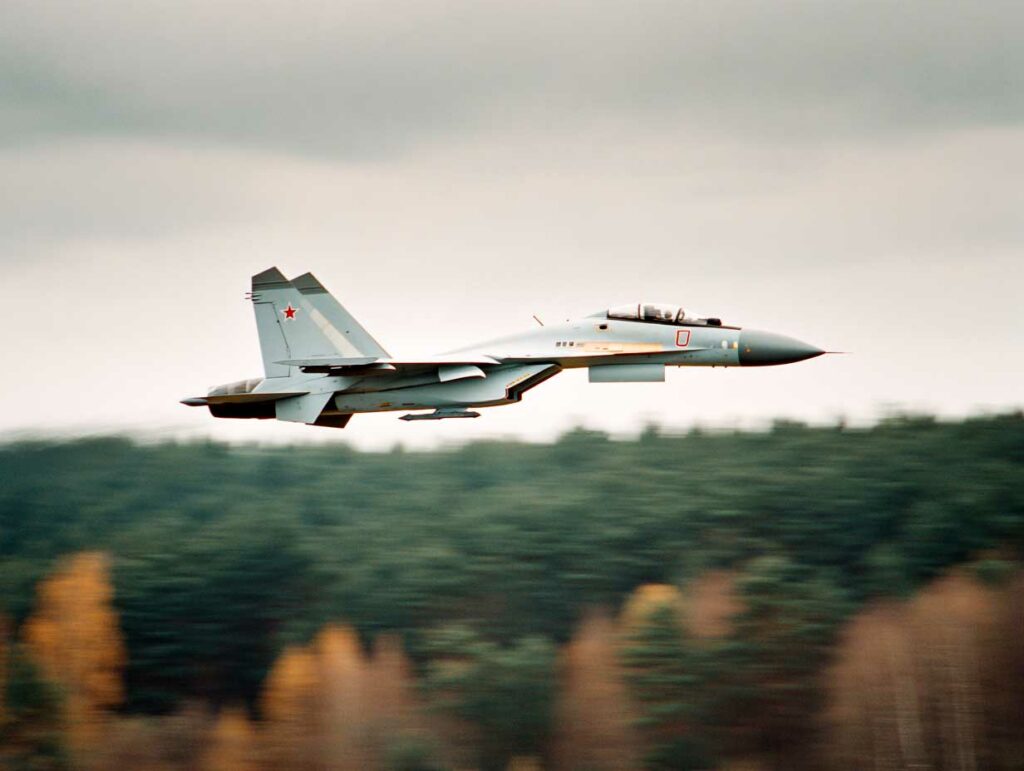
In May 2025, Ukraine shot down two Russian Sukhoi-30s using Magura-7 drones equipped with Sidewinder missiles, marking a major tactical breakthrough.
The Ukrainian army struck a unprecedented tactical blow in May 2025 by destroying two Russian Sukhoi-30 fighter jets using Magura-7 surface drones armed with AIM-9 Sidewinder missiles. The operation, named “Spiderweb”, took place in the Black Sea, near the coast of Crimea. It is the first documented action in which aircraft have been shot down from an unmanned naval platform. The fact that this technology has been deployed by an army under pressure demonstrates a structural change in modern warfare, in which mastery of drones is becoming a decisive factor, including in air-to-sea combat.
The Ukrainian-designed Magura-7 system has already been used in naval attacks against Russian targets, but its adaptation for air defense is an operational tactical innovation. The AIM-9 missile, originally designed for air combat, has been modified to be launched from an unmanned naval platform. The entire system was operated remotely, confirming Ukraine’s ability to integrate Western technologies into local platforms.

An air-to-air missile-armed surface drone: architecture of the Magura-7
The Magura-7 is a surface drone developed by Spetstechnoexport under the supervision of the Ukrainian Ministry of Defense. Initially designed for reconnaissance and attack missions against ships, it is 5.5 meters long, with a maximum speed of 75 km/h and an operational range of up to 800 kilometers. Its payload exceeds 200 kilograms, allowing it to carry various types of ammunition, sensors, and electronic equipment.
In Operation Spiderweb, the Magura-7 was modified to incorporate two AIM-9 Sidewinder missiles, which are passive infrared homing missiles originally designed for fighter aircraft. This missile has a range of 18 to 35 kilometers depending on the version and can strike a target flying at more than Mach 2. The installation of this type of weaponry on an unmanned maritime platform is a first in military history.
The targeting system is reportedly coupled with a passive radar or thermal imaging system, enabling the drone to detect the infrared emissions of an approaching or patrolling aircraft. The software adaptation and calibration of the missile for launch from an unstabilized fast boat is a technical challenge that demonstrates the highly advanced integration of several layers of technology.
The estimated unit cost of a Magura-7 is $250,000, excluding weapons. Compared to the potential losses of a Sukhoi-30 aircraft, which costs around $45 million, this destruction ratio demonstrates the strategic cost-effectiveness of the platform. This tactical model could inspire other navies to develop anti-aircraft surface drones.
A double strategic loss for Russia: impact of Operation Spiderweb
The Sukhoi-30SM is a 4+ generation multi-role fighter aircraft deployed by the Russian Aerospace Forces since 2012. Equipped with BARS radars and capable of flying at Mach 2, it is generally used for escort, interdiction, and maritime air cover missions. The loss of two aircraft in a coastal area confirms its operational vulnerability to unconventional threats.
According to available information, the two aircraft were shot down approximately 35 kilometers southwest of Sevastopol while conducting an interception patrol as part of the defense of the airspace around Crimea. No Russian radar system detected the Magura-7 drone, which has virtually no radar signature due to its low altitude over the water and its composite profile. According to intercepted data, the pilots were unable to eject in time, reinforcing the tactical impact of the strike.
This operation marks a turning point in Ukraine’s asymmetric defense. By successfully neutralizing air superiority fighters, Ukraine is sending a strategic signal to Moscow: air dominance in the Black Sea area is now contested by alternative vectors.
Russian Sukhoi-30s, although effective against Bayraktar TB2-type aerial drones and cruise missiles, are vulnerable to attack from below, especially in environments where radar surveillance does not cover the layers close to the sea surface. Russia will have to adapt its patrol patterns, spend more on naval electronic warfare, and dedicate additional resources to low-altitude maritime detection.

A doctrinal break in the use of Ukrainian drones
Operation Spiderweb marks a shift in the doctrine of Ukrainian drone use. Until now, efforts have focused on reconnaissance, ground attack, and naval harassment missions, particularly using kamikaze surface drones against frigates and oil tankers. Here, the objective was air neutralization from a maritime platform, which requires much more complex tracking and interception capabilities.
The integration of an air-to-air missile into a naval drone changes the traditional categories. It is neither a torpedo, a surface-to-air missile nor an autonomous interceptor. It is a hybrid system that meets the need for flexibility in a saturated environment. This development illustrates multi-domain warfare, where the boundaries between land, air and sea are blurring in favor of convergence.
The success of the operation also relies on Ukraine’s digital infrastructure. Remote control of the Magura-7 drones is based on an encrypted communication architecture, linked to ground stations via satellite or Starlink relays. Decision-making autonomy remains human, but some targeting functions are semi-automated, which shortens engagement times.
This approach reduces human vulnerability, lowers costs, and disrupts the enemy’s tactical anticipation. Unlike conventional anti-aircraft missiles launched from ground batteries, these drones can reposition themselves silently and then strike at very short range with little warning.
Finally, the fact that Western missiles are integrated into Ukrainian platforms demonstrates that Ukraine is taking the technological initiative on the battlefield, leveraging components from several countries to develop a composite, agile, and lethal system.
War Wings Daily is an independant magazine.